Japan Eats, Part III: Yoshoku Izumi in Osaka
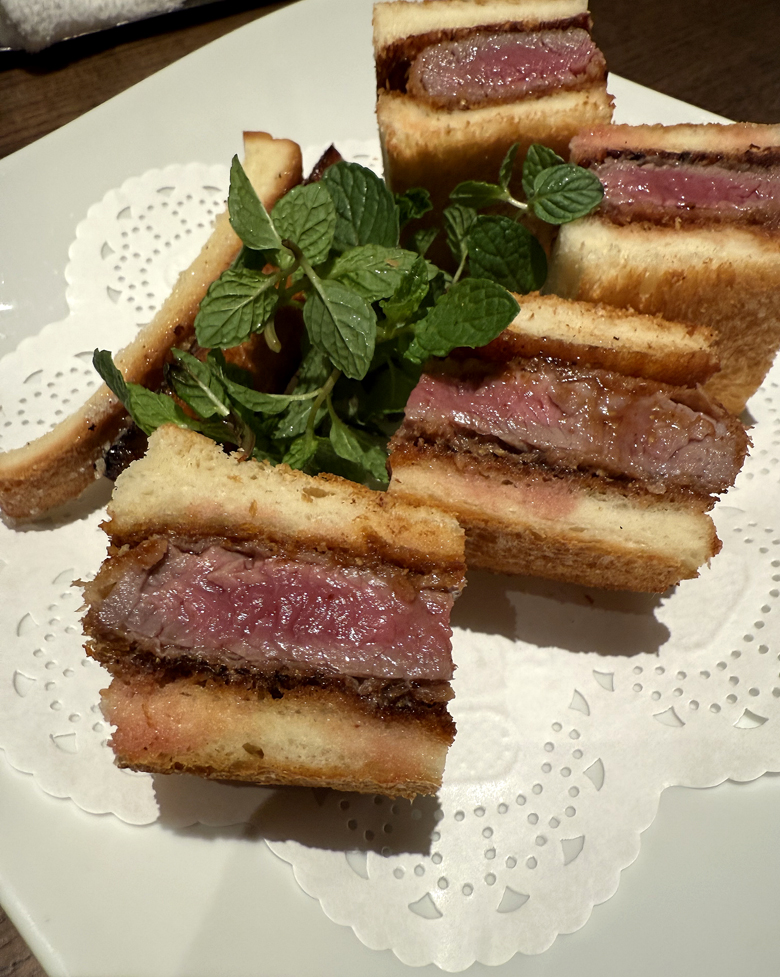
Osaka, JAPAN — Getting a reservation at Yoshoku Izumi was an arduous affair. Even when we managed to land the remaining seats on a Saturday night at 8:30 p.m., the extensive list of dos and don’ts on its website had us quaking in fear we’d commit a faux pas and get thrown out mid-bite.
Visions of the iconic Soup Nazi on “Seinfeld” were firmly planted in our heads.
We may have stepped inside the unmarked door, identifiable only by its potted maple tree outside, with trepidation. However, we left not only completely at ease, but thoroughly charmed and beyond content by a tasting menu that was absolutely delicious, as well as a relative bargain.
Our journey to this restaurant, renowned for its yoshoku or Japanese-style Western cooking, began last year, when my friend Charles, who travels often to Japan and knows conversational Japanese, recommended it highly. Having dined there twice, himself, he wasn’t sure if anyone on staff spoke much English. And unfortunately, Izumi is one of a number of restaurants in Japan that only takes reservations by phone.
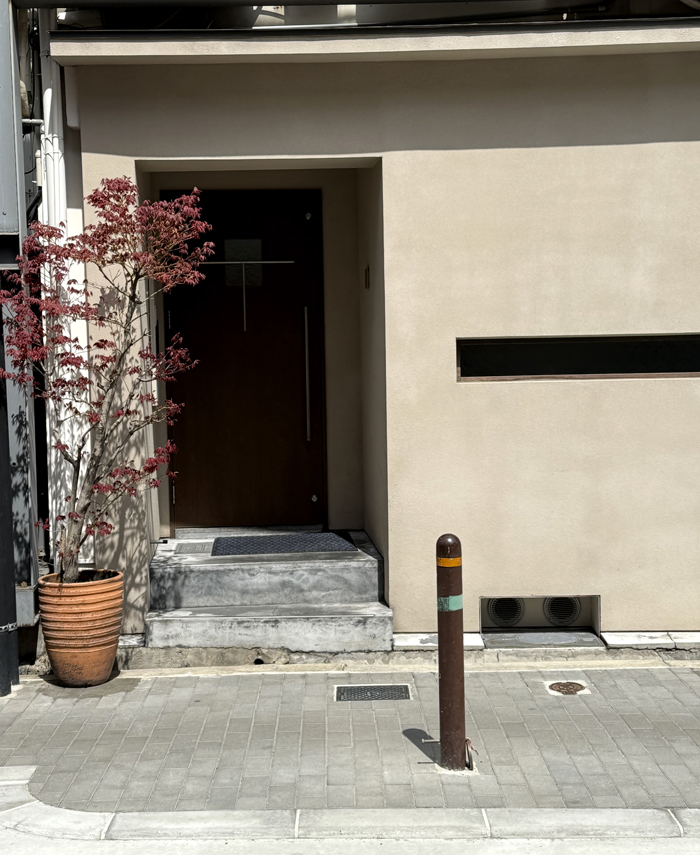
So, I enlisted my friend Donna, who speaks Japanese, to try calling the restaurant on my behalf. She called, and she called. No matter if it was morning, afternoon, or evening in Japan, no one ever picked up the phone even after days of her trying. There was no answering machine, either, to leave a message.
At that point, I figured the only option remaining was to wait until I arrived in Japan to have the hotel concierge call the restaurant. When he did, I was stunned that the restaurant picked up immediately, even though it was during dinner service.
Having come across another restaurant or two that stated on their websites that they don’t accept calls from overseas guests, my guess is that Izumi doesn’t, either. However, when they saw that the number calling was from Japan this time, there was no hesitation to answer it. That is how we managed to snag two seats at this tiny restaurant that has room for only eight at the bar in front of the open kitchen, and can accommodate up to 6 at one lone table in the corner.
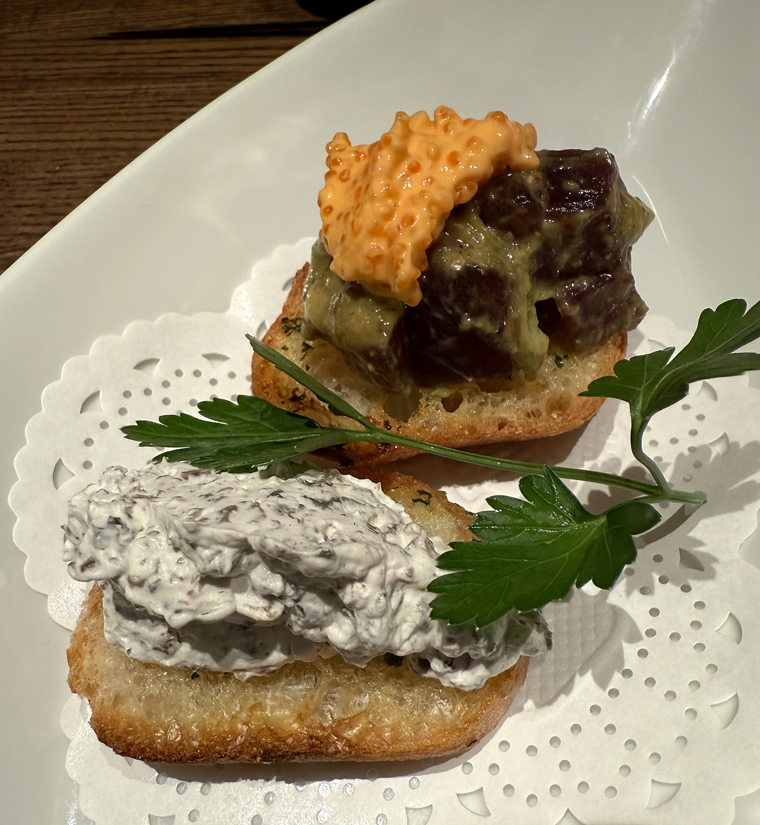
How small is this place? The chef alone does all the cooking. Two assistants help with serving and washing dishes.
If you run the website through Google translate, the Q&A section states that you should refrain from photographing the chef or any personnel, the kitchen, the preparation of the food, and even the menu. Gulp. Is it a wonder we were a little on edge?
We breathed a sigh of relief, though, when the chef greeted us warmly. Upon realizing that we were the only guests that evening who couldn’t speak Japanese, he didn’t hesitate to employ his limited English to converse with us.
Izumi offers an a la carte menu, which I saw a couple of the guests choose, as well as a couple of tasting menu options. We went with the latter, going for the 8-course menu. The final course is your choice of either katsu sando (fried beef cutlet sandwich) or omurice (fried rice omelet) that is shared between two people. Because we wanted to try both, we chose the sandwich for our last course and added the omelet to it.
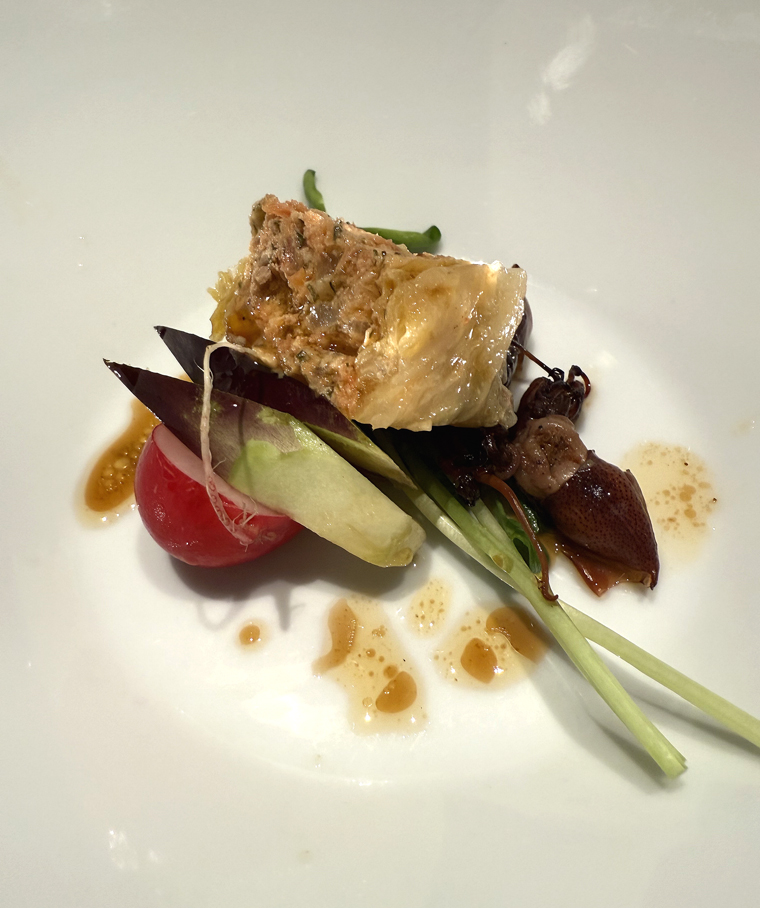

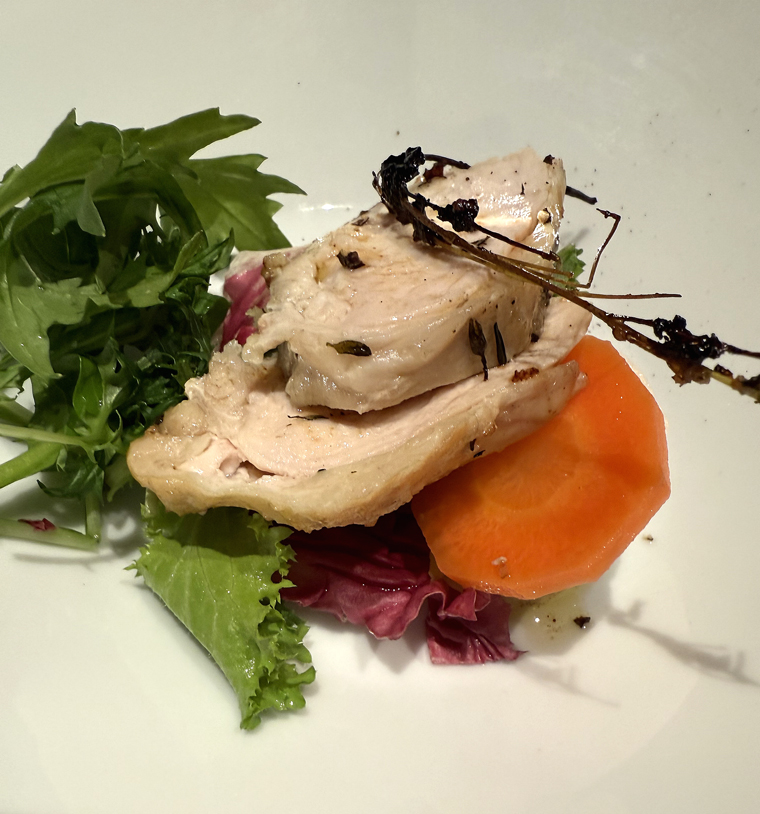
The tasting menu includes one glass of wine per person, too, with a choice between two reds and two whites. My husband went with a Pinot Noir, while I chose an Oregon Gewurztraminer.
We nibbled on garlic-butter crostini topped with mushroom mousse and with tuna and avocado as we watched the chef quietly and intently plate dishes.
Then came a morsel of smoked salmon with the tiniest whole smoked squid, garnished with chilled spears of raw eggplant.
Green bean soup may have looked austere in the bowl. But it tasted vibrantly grassy and sweet like the most perfect squeaky, spring green beans.
Slices of chicken breast were cooked low and slow in chicken fat, rendering it not cottony as that cut is wont to be, but juicy and somehow more marbled tasting as if it were a piece of pork.

A compact little Wellington with a bronzed and exceptionally crisp pastry shell encased not beef but shrimp and shiitakes. It was napped in a sauce made from shrimp shells to give it a concentrated shellfish taste.
Japanese-style Western food is known for a few iconic dishes. Hamburger steak is one of them. Here, it’s seared, leaving it crusty on the outside with an interior that’s far juicier than most American burger joints serve up. A demi glace-like sauce is spooned over and a dollop of blueberry sauce is off to the side, adding a hit of sweet fruitiness to all that beefiness. A dollop of eggy potato salad completes the dish.

For the katsu sando, the chef toasts Japanese milk bread in the oven until it’s crisp and deeply golden. He cuts the crusts off, before laying a panko-crusted and fried beef cutlet in between two slices with a smear of tonkatsu sauce. The beef is juicy, tender, tastes of Worcestershire sauce, and feels thoroughly decadent biting into it. Sprigs of fresh mint garnish the plate. Pluck a few leaves off and slide them between the bread to add a bright whoosh of freshness.
Nothing goes to waste here. Those cut-off bread crusts aren’t tossed away, but are fried and rolled in sugar to create an extra treat on the plate. I remember being intrigued by these while watching the Netflix film, “The Makani: Cooking for the Maiko House,” in which a young female cook fries up these sweet treats one afternoon much to the delight of the geisha apprentices.
At this point, the chef came over to ask if we were full, just in case we wanted to skip adding the omelet rice. We were determined to soldier on, telling him with gusto, “We can do it!,” much to his amusement. So, he started frying up the rice and beating the eggs.

I can see why he doubted we would finish it, as it just about covers the plate. He deposits the hot rice with bits of beef in it on the plate, then carefully slides the omelet on top, breaking it through the center so its fluffy, barely set interior starts to cascade over the filling. He ladles more demi glace-like sauce overtop before adding a spoonful of tomato sauce.
This is the ultimate Japanese comfort food — with creamy, silky eggs combining with deeply savory rice and a burst of sweet-tangy sauce. I think he was just as surprised as we were that we managed to finish every single bite of it.
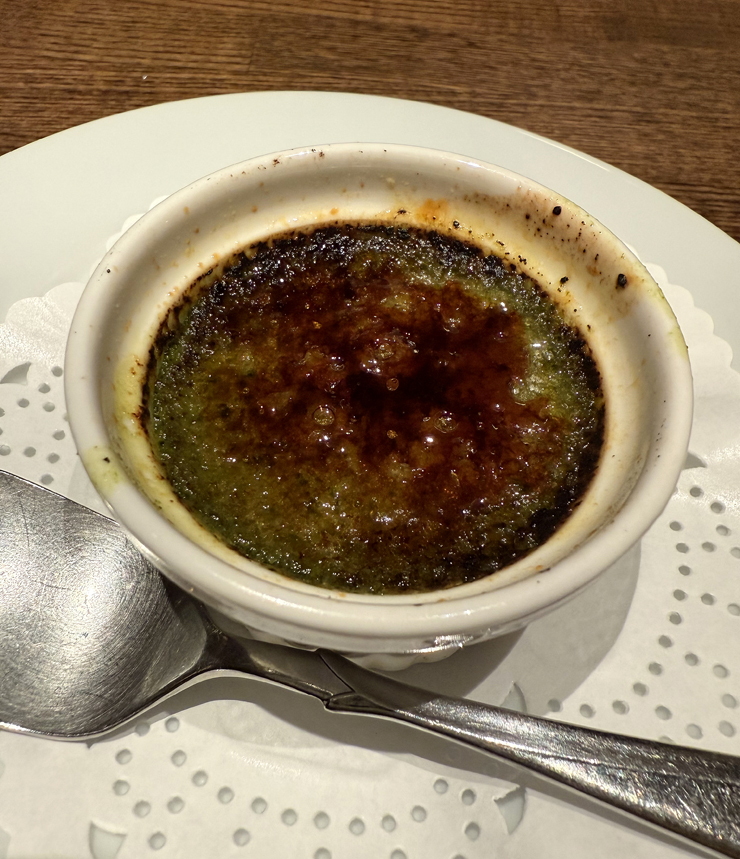
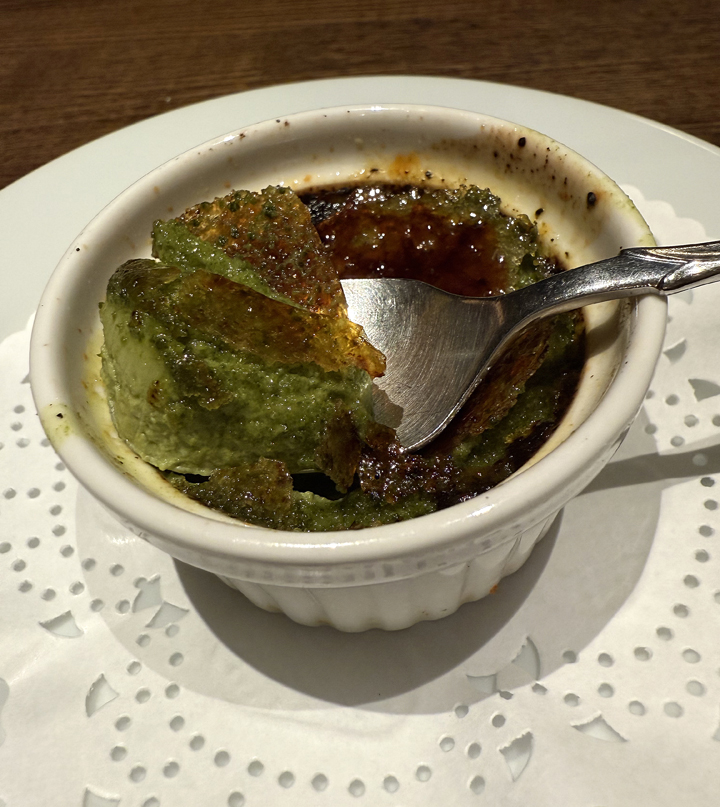
Dessert followed — a crackly-topped matcha creme brulee with your choice of tea, coffee or espresso.
By now, we are the only diners left in the restaurant, having ordered that extra dish. The chef comes by to remind us that the restaurant will close promptly at 11 p.m., about 10 minutes from now, which is no problem for us.
Would you believe that this 8-course meal for two, which included two glasses of wine, as well as the extra course we tacked on, came to about $148 U.S.? Yes, in total.
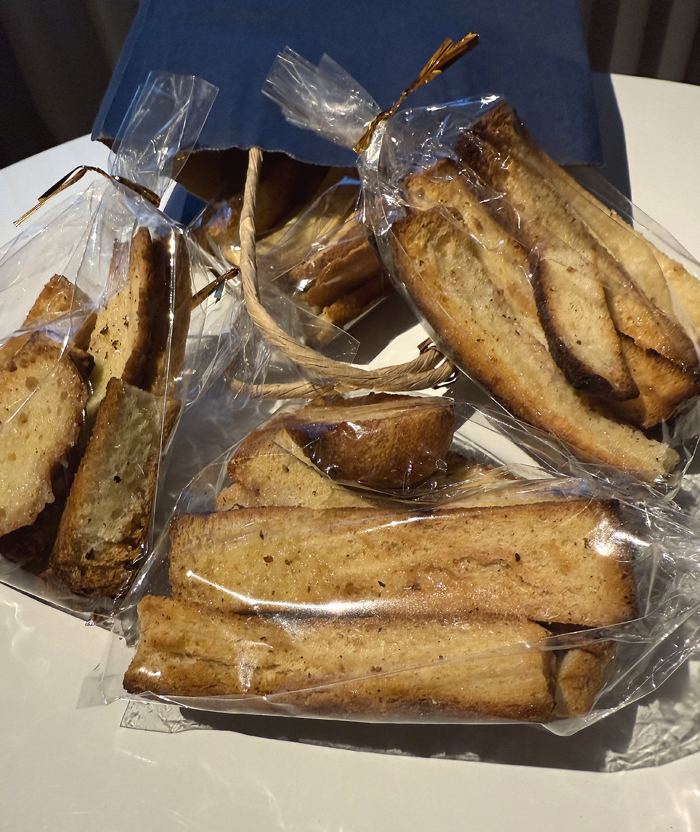
As we donned our coats to leave, the chef asked how we came to dine at Izumi. Then, he handed us a goodie bag, something no one else that night apparently received. It was filled with small cellophane-bags of those sugared bread crusts and extra garlic-butter crostini.
As he bid us goodbye with a gentle wave, he conferred upon us the ultimate nod of approval: “See you again next time.”
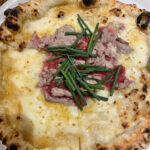
More: Japan Eats, Part I: Savoy Pizza
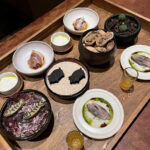
And: Japan Eats, Part II: Michelin-Starred Koke


Wonderful experience. I love fine Japanese dining (and not so fine). Interesting you chose an Oregon wine. Also interesting is that it was one of only four offerings of wine that evening. That must have been glorious wine to make it all the way to their exclusive table.
Hi Cynthia: It was an interesting concept in which you get one glass of wine included with the tasting menu, and there are only four choices to choose from. Although my husband chose the Pinot Noir, I am always a big fan of Oregon ones, so I happily snuck a sip or two. LOL